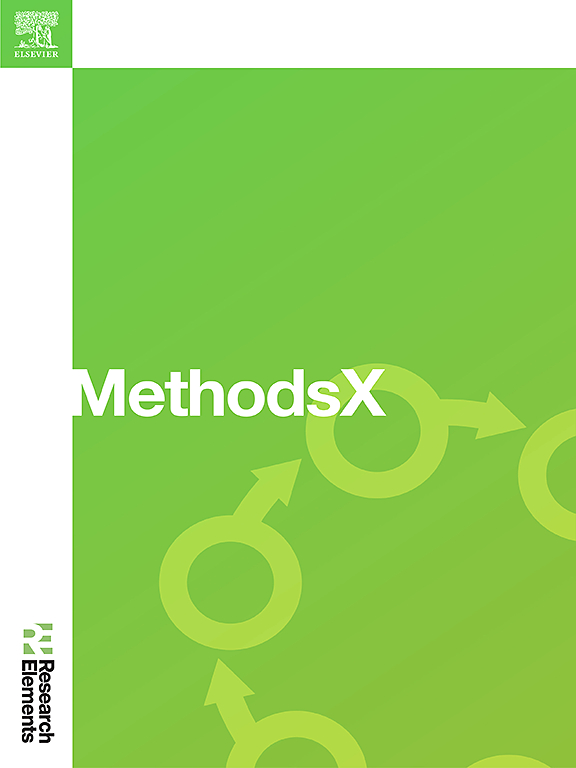Sampling and metabarcoding of arthropod environmental DNA traces from flowers
IF 1.6
Q2 MULTIDISCIPLINARY SCIENCES
引用次数: 0
Abstract
Screening and selection of insectary plants that promote natural enemies has been mostly approached via conventional methods that employ mundane man-hours of manual surveys, sampling, sorting, and viewing under microscope. In this digital age, mundane man-hours in ecological surveys can be approached with revolutionary sequencing technology, i.e. the Next Generation Sequencing (NGS). Ecological scientist, especially marine biologists have been tracing environmental DNA (eDNA) by utilizing the NGS technology to study/monitor micro- and macro-organisms in aquatic conditions. The eDNA technology has now been adopted by applied entomologists and ecologists to survey and monitor arthropod biodiversity through space and time. Several advancements have been made in detecting arthropod eDNA traces cryopreserved in plant tissues such as stems, branches, leaves, and flowers. Using the techniques developed thus far, we adopted, and slightly modified the method originally intended for aquatic studies to evaluate arthropod eDNA traces on flowers of flowering plants. Corroborating the method, we showed that eDNA traces washed off from floral parts revealed plethora of arthropod species. Furthermore, data sets generated from eDNA analysis may assist in improving the data gathered using conventional methods.
- •Conventional methods used in surveying arthropod fauna (especially indigenous natural enemies) on flowering plants can be a tedious exercise. Here, we adopted and optimized the method initially designed for aquatic environmental DNA analysis to supplement conventional methods in arthropod studies.
- •The optimized method showed that traces of arthropod eDNA materials on floral parts are detectable.
- •The eDNA technology can be used to generate qualitative data, especially data on the cryptic and unknown species of flowering plant-associated-natural enemies, that can supplement the quantitative data gathered from conventional methods.

花中节肢动物环境DNA的采样和元条形码研究
筛选和选择促进天敌的食虫植物主要是通过传统的方法来进行的,这些方法需要花费平凡的人工时间进行调查、取样、分类和在显微镜下观察。在这个数字时代,生态调查中平凡的工时可以通过革命性的测序技术来解决,即下一代测序(NGS)。生态学家,特别是海洋生物学家一直在利用NGS技术追踪环境DNA (eDNA)来研究/监测水生环境中的微生物和大型生物。eDNA技术已被应用昆虫学家和生态学家广泛应用于节肢动物生物多样性的时空调查和监测。节肢动物在植物茎、枝、叶、花等组织中低温保存的eDNA痕迹检测方面取得了一些进展。利用目前发展的技术,我们采用并略微修改了最初用于水生研究的方法来评估开花植物花上节肢动物的eDNA痕迹。为了证实这一方法,我们发现从花的部分洗去的eDNA痕迹揭示了大量的节肢动物物种。此外,由eDNA分析产生的数据集可能有助于改进使用传统方法收集的数据。•调查开花植物上节肢动物动物群(尤其是本土天敌)的传统方法可能是一项繁琐的工作。在这里,我们采用并优化了最初设计的水生环境DNA分析方法,以补充节肢动物研究中的常规方法。•优化后的方法表明,节肢动物的eDNA物质在花部可以检测到痕迹。•eDNA技术可用于生成定性数据,特别是关于开花植物相关天敌的隐种和未知物种的数据,可以补充传统方法收集的定量数据。
本文章由计算机程序翻译,如有差异,请以英文原文为准。
求助全文
约1分钟内获得全文
求助全文
来源期刊

MethodsX
Health Professions-Medical Laboratory Technology
CiteScore
3.60
自引率
5.30%
发文量
314
审稿时长
7 weeks
期刊介绍:
 求助内容:
求助内容: 应助结果提醒方式:
应助结果提醒方式:


